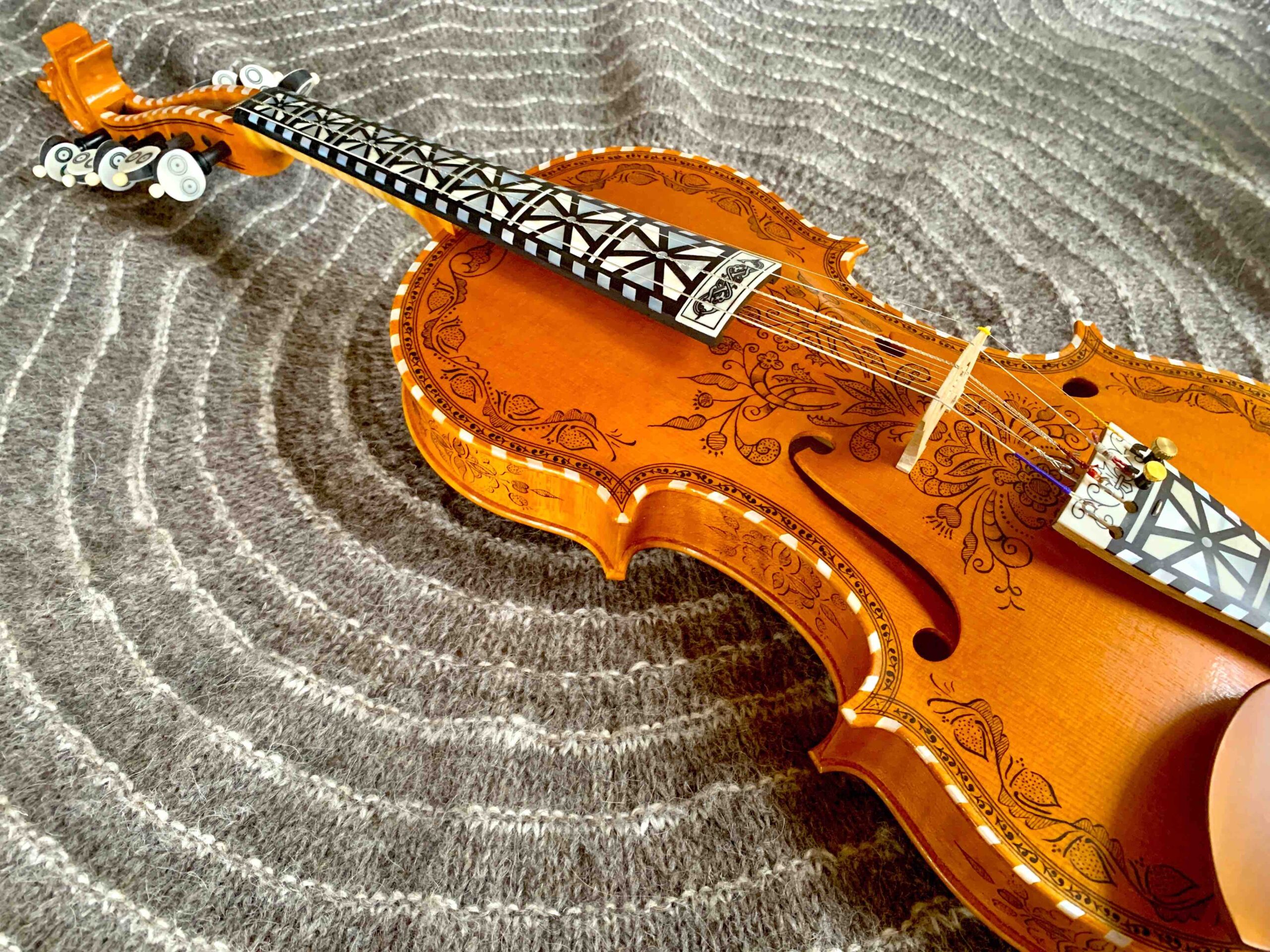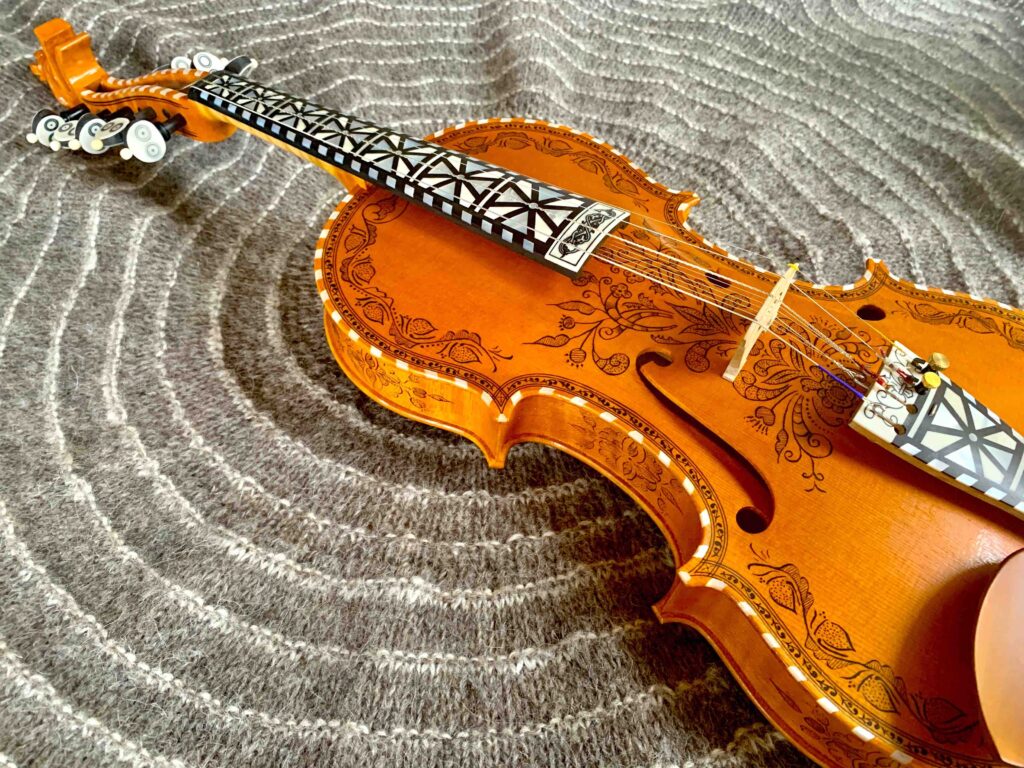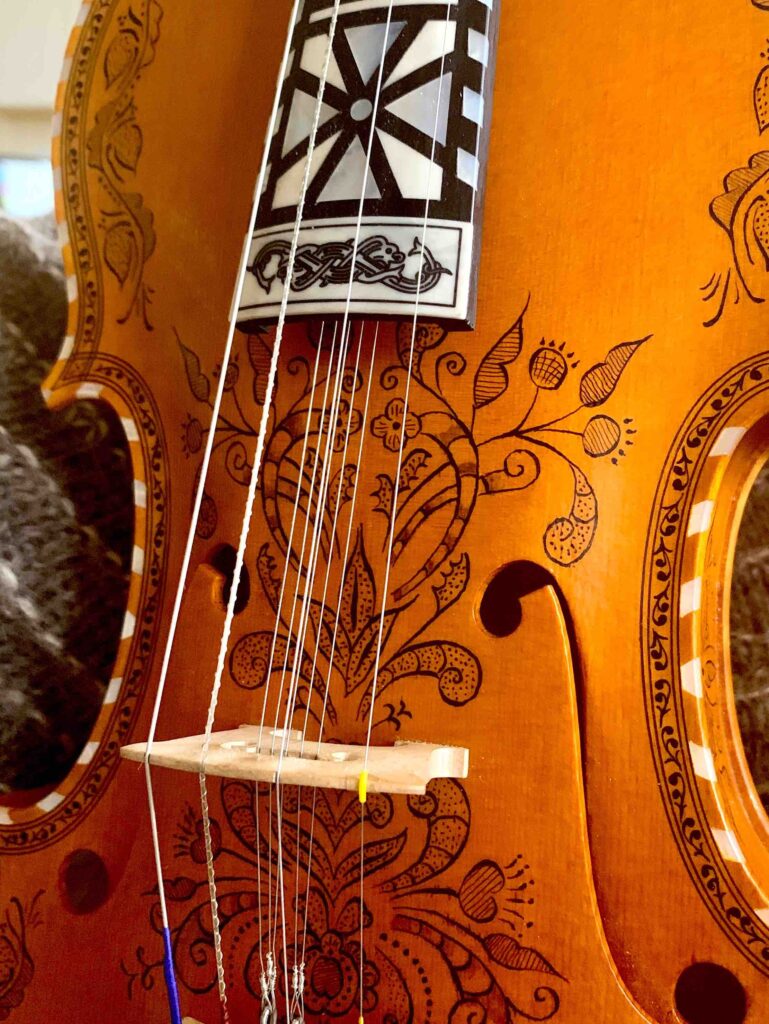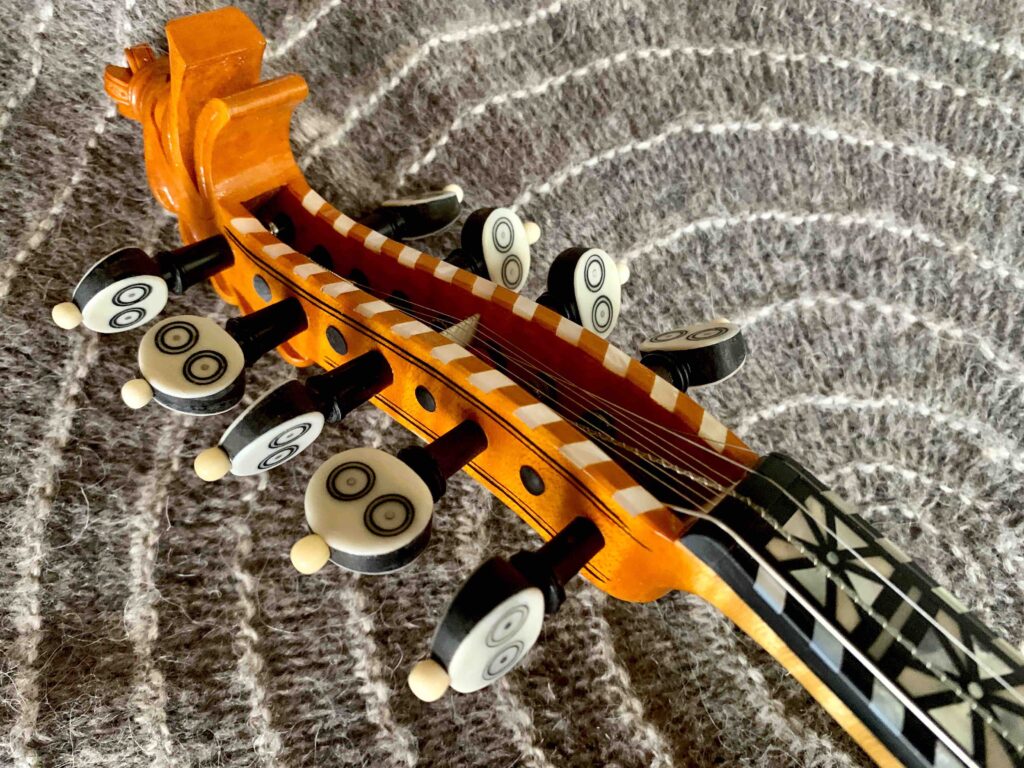Today’s a good day to share something beautiful. This is my new hardingfele, a nine-string fiddle that’s the national instrument of Norway.
Hardanger fiddles were developed in the 17th century, and (despite being branded “the devil’s instrument” during the Haugean religious revival) they quickly became the most important instrument in Norwegian folk music. Typically, they have eight or nine strings, but only four of them are bowed. The others are sympathetic strings running stealthily under the fingerboard, tuned to create lush overtones as the upper strings are played.
A hardingfele is more richly ornamented than a violin, but there are technical differences as well. Their bodies are rounder than those of flat fiddles, domed slightly in the area above the f-holes. Unless there’s some kind of scordatura going on, a classical violin is always tuned to G D A E, while a hardingfele has over twenty possible tunings. The most common tuning is oppstemt, in which a fiddle is tuned up a note on the lowest string to A D A E. At least, that’s what the sheet music says. In terms of the actual pitch, however, all of the strings are tuned a step higher, to B E B F#. Other tunings are gorrlaus or very loose tuning (F-D-A-E ) and the famous trollstemt or troll-tuning (A-E-A-C♯), used most famously in the devil’s tune Fanitullen.
You might think it would be easy-peasy for a violinist to play a hardingfele, but you’d be surprised. The higher pitch in oppstemt tuning and the shorter neck length mean that my fingers don’t land exactly where my violinist brain tells me they should–at least, not if I want to play precisely in tune. Then there’s the whole matter of the fiddle’s flattened bridge, which facilitates the extensive use of double stops in folk music. The bridge is so flat, I sometimes find myself brushing the wrong strings by mistake, sounding truly terrible. It’s been humbling to learn some new techniques, to say the least
While violinists can choose gut strings, steel strings, or synthetic strings, hardingfele players have only gut (often wrapped in silver) or steel. The photo above shows that the third string on my violin is made from gut that’s been very loosely wound. The loose silver winding creates friction under the fingertips, making it difficult to slide around or shift positions. However, everything is played in first position on a hardingfele, so the friction doesn’t matter anyway.
Speaking of strings, I’ve unexpectedly become a hoarder of fiddle strings. Violinists have dozens and dozens of string companies to choose from, but for a spelemann or hardingfele player, the choices are more limited. You can’t put regular violin strings on your fiddle because the increased string tension would seriously damage your instrument. Only three companies in the world make hardingfele strings, and only a few retailers in the US sell the strings with anything resembling quick shipping. I found that out the hard way, so now I always have two sets of strings in my stash.
What else is different for hardingfele players? Sheet music, or the lack thereof. Many fiddle tunes are handed down from teacher to student, different variants learned by ear. And the tunes that have been transcribed are often scored by hand, distributed through unofficial channels–almost like there’s a secret society of folk musicians keeping the tradition going.
I’m currently working with my teacher Vidar Skrede on a number of traditional Norwegian tunes, mostly springar and halling dance pieces for a potential upcoming concert. But I’ve also set my sights on a few lydarlått, or listening tunes, like this haunting Huldreslått frå Vang, performed by the award-winning classical violinist Ragnhild Hemsing, who’s also recorded and performed extensively on hardingfele.
Eventually, I hope to learn a few eldritch hulder tunes, which a fiddler is said to master by listening to the hidden folk or elves. As the story goes, the supernatural creatures known as huldrefolk use their haunting melodies to lure fiddlers into the fairy realm, perhaps never to return. If by chance the fiddler is lucky enough to return unscathed, he or she will have a new tune to play.



